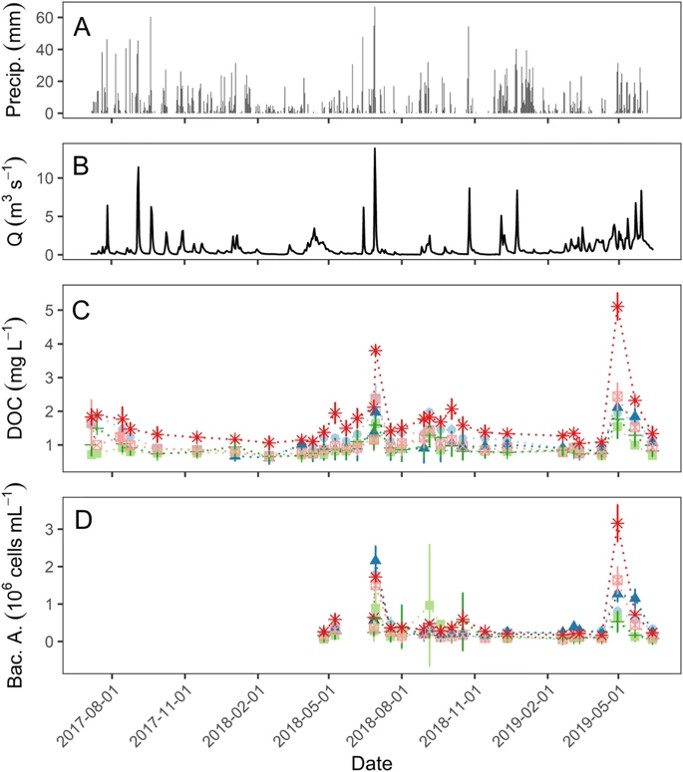
Authors
Florian Caillon & Jakob Schelker
Small headwater streams interlink catchment soils with the river network. As water makes its way from the hillslopes to the stream, it may transport dissolved organic carbon (DOC) and potentially soil microbes into stream water. In this study, we aimed at quantifying the dynamic transfer of DOC and microbial life, namely bacteria from catchment soils into streams. We hypothesized that increased soil saturation enhances the lateral inflow of bacteria and DOC into streams. To address this hypothesis, we sampled six first order streams and three soil transects at two different depths located within the pre-alpine Oberer Seebach (OSB) catchment in Austria over a duration of 2 years. We found a strong variation in DOC concentrations (range 0.4–5.6 mg L−1) and bacterial abundances (range < 500,000–3,863,000 cells mL−1) measured by flow-cytometry. The highest values of DOC and bacterial cells occurred during high flow events. DOC concentration and bacterial abundance were correlated across all streams and seasons. In soils, DOC ranges were higher and were also correlated with bacterial abundance, while DOC concentrations were ∼ 10 times higher per bacterial cell than in streams. Overall we show that soils provide a dynamic inflow of bacteria and DOC to first order streams. Most probably, this results in a dynamic and reoccurring inoculation of small streams from catchment soils during runoff events. We propose that this dynamic microbial inoculation of small streams is potentially relevant for microbial community dynamics of downstream receiving waters.
